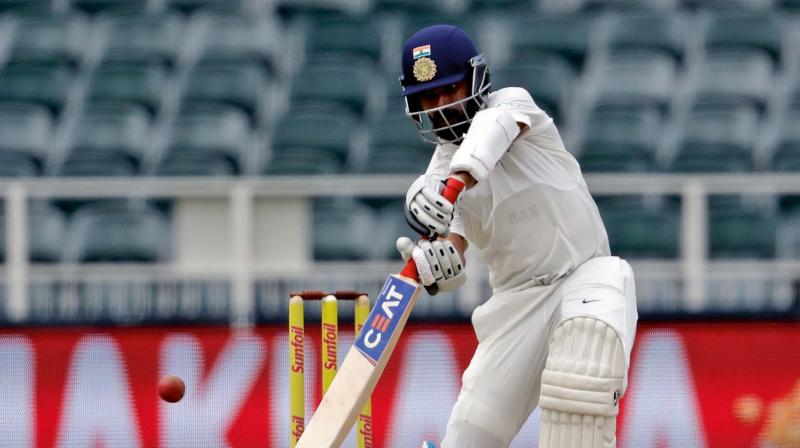Ajinkya Rahane's resurrection restores his status in side

Ajinkya Rahane’s resurrection has been one of the highlights of the tour to South Africa for me. After being sidelined from the playing side for a couple of months, his luck turned quite dramatically within a couple of weeks.
Just two innings – one which helped take India to a winning total in the final Test, the other in a fine run chase in the first ODI – have restored him to his original status in the side: of a fine, reliable, adaptable, versatile batsman.
Both these knocks came under pressure, highlighting his virtues and maturity. Rahane’s now looking an integral part of the team in both formats, and if his form holds, should be a certainty even in the T20 matches.
How did this change come about? Rahane clearly didn’t spend time on the reserve bench moping. Rather, watched closely technical demands being made on batsmen and worked on his mental make-up to come good when the opportunity arrived.
The biggest factor in Rahane’s redemption was obviously the failure of the top order in the first two Tests that India lost. Barring Virat Kohli, the other batsmen were at sixes and sevens on the spicy pitches and hostile bowling.
None from Dhawan, Rohit and Rahul – who replaced Dhawan – looked convincing. Pujara buckled down to the task of spending time in the middle with characteristic resolve, but was choked for runs. M. Vijay’s best efforts came in the last Test.
After two Tests, India’s batting was demoralised and highly vulnerable. Though the decision to play only five specialist batsmen came under harsh scrutiny and not a little flak, in my reckoning this was not unfounded.
It was the best – if not only – way to beat South Africa at their own game. However, if four of the top five are out of sorts, it becomes an untenable gamble. For the last Test, a change in personnel, if not strategy, had become imperative.
In hindsight, the team management must be lauded for not discarding the tactic and persisting with five batsmen. This gave Kohli enough arsenal – even though Pandya did not bowl too many overs – to push for and win the last Test.
Given his past record overseas should Rahane have been played from the first Test?
In hindsight, one could say yes. But not including him in the first Test was probably justified. His form had been woeful where the others had looked in fine fettle. On a short tour, without lead up games into the first Test, you go with those in form.
The selection got trickier for the second Test. Should those who have had a poor match be dumped? It was a 50-50 scenario. Coach Shastri and captain Kohli stuck to their original decision that backfired.
Rahane’s success in the last Test their was as much a rebuttal of the selection theory as credit to his own tenacity. Under daunting circumstances, he came good in the second innings. The tide was beginning to turn.
His inclusion in the first ODI had now become imperative, the team management compelled to revise its own earlier yardstick for him for in the past few months, Rahane was categorized as a ‘back-up’ opener.
This seemed an inexplicably dogmatic position to take for a player who had performed well in virtually all batting slots in the past. But with the batting fragile, Rahane was cast in the middle order and went on to play a superb role in India’s successful run chase.
Interestingly, before the match, Kohli had said that only the number one spot in the ODI team remained up for grabs as the days for fructifying the strategy for the 2019 World Cup were being whittled down.
By the end of the first game, Rahane had not only possibly sealed that slot for himself, but in the context of the tour, also given a telling reminder that he would be of value anywhere in the order in any format.
The old cliche goes that fortune favours the brave, but there is also a case to be made for those who are patient, persevering, resilient and doggedly determined, as Rahane has shown.

